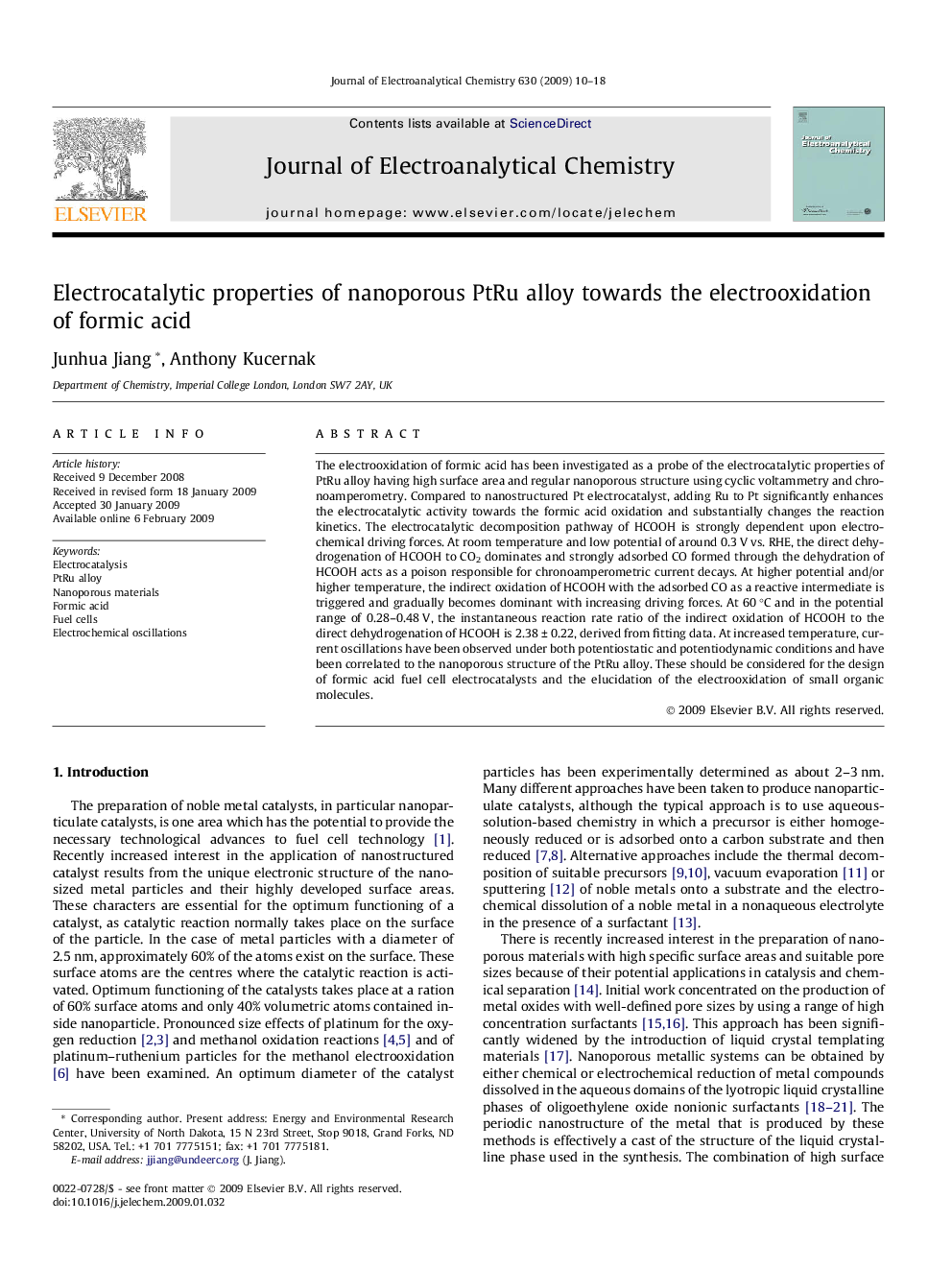| Article ID | Journal | Published Year | Pages | File Type |
|---|---|---|---|---|
| 220406 | Journal of Electroanalytical Chemistry | 2009 | 9 Pages |
The electrooxidation of formic acid has been investigated as a probe of the electrocatalytic properties of PtRu alloy having high surface area and regular nanoporous structure using cyclic voltammetry and chronoamperometry. Compared to nanostructured Pt electrocatalyst, adding Ru to Pt significantly enhances the electrocatalytic activity towards the formic acid oxidation and substantially changes the reaction kinetics. The electrocatalytic decomposition pathway of HCOOH is strongly dependent upon electrochemical driving forces. At room temperature and low potential of around 0.3 V vs. RHE, the direct dehydrogenation of HCOOH to CO2 dominates and strongly adsorbed CO formed through the dehydration of HCOOH acts as a poison responsible for chronoamperometric current decays. At higher potential and/or higher temperature, the indirect oxidation of HCOOH with the adsorbed CO as a reactive intermediate is triggered and gradually becomes dominant with increasing driving forces. At 60 °C and in the potential range of 0.28–0.48 V, the instantaneous reaction rate ratio of the indirect oxidation of HCOOH to the direct dehydrogenation of HCOOH is 2.38 ± 0.22, derived from fitting data. At increased temperature, current oscillations have been observed under both potentiostatic and potentiodynamic conditions and have been correlated to the nanoporous structure of the PtRu alloy. These should be considered for the design of formic acid fuel cell electrocatalysts and the elucidation of the electrooxidation of small organic molecules.
